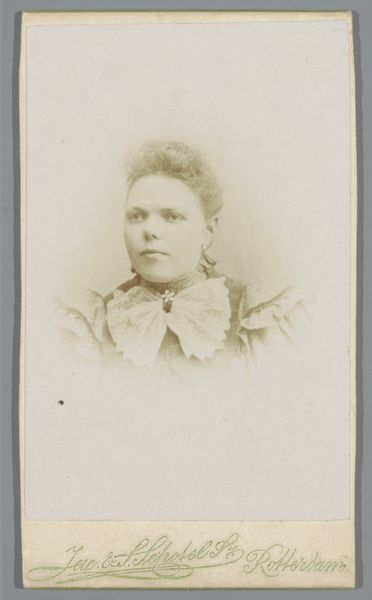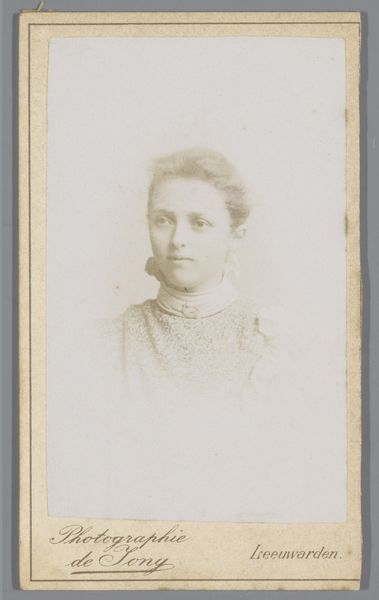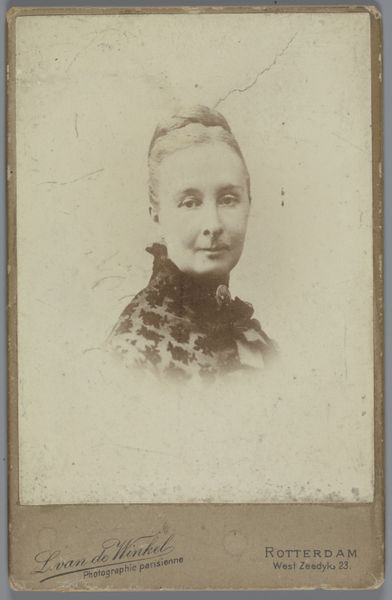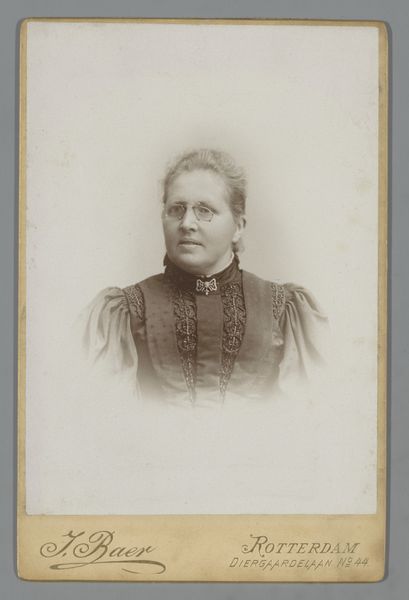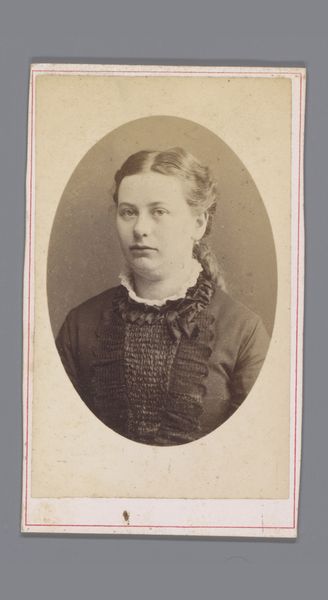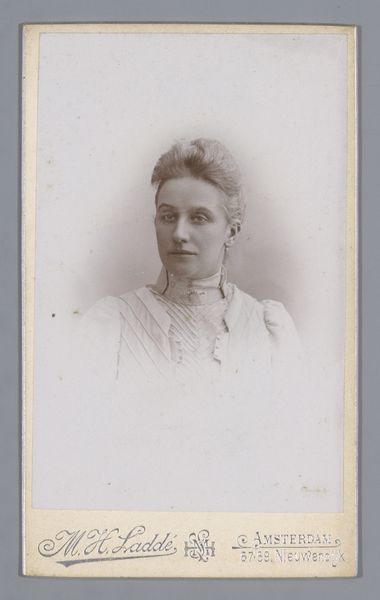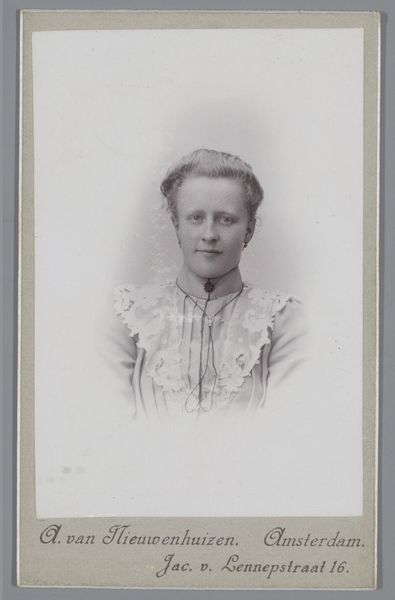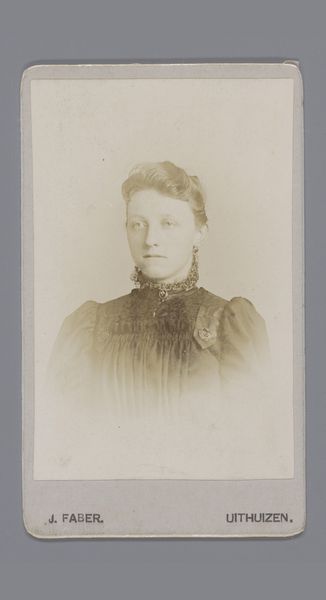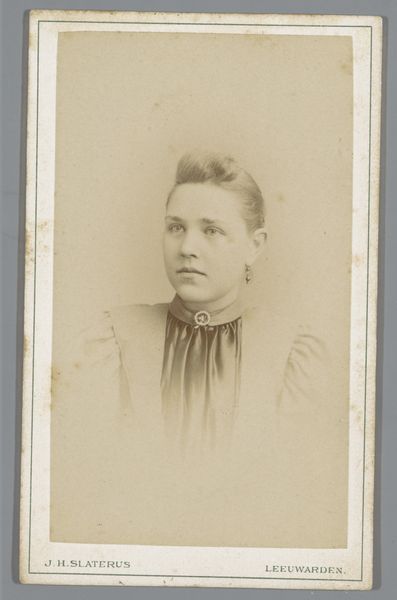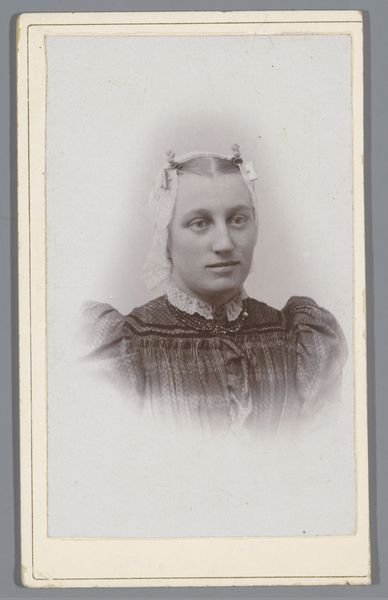
photography
#
portrait
#
photography
#
realism
Dimensions: height 103 mm, width 63 mm
Copyright: Rijks Museum: Open Domain
Editor: This is "Portret van een onbekende vrouw," or "Portrait of an Unknown Woman," taken sometime between 1882 and 1922 by H.C. de Graaff. It's a photographic portrait, and there's something quite striking about the subject’s direct gaze. What kind of cultural symbols do you observe within this portrait? Curator: The gaze is indeed arresting. Photography at this time carried the symbolic weight of documentation and memory. This woman, though unknown to us by name, represents a whole stratum of Dutch society. Her dress, for instance, the high-necked blouse and ornate jacket, speaks to a certain social class, projecting images of respectability and perhaps even aspiration. Consider how carefully these sartorial choices were made to project a specific persona. Editor: So, the clothing itself is a kind of symbol? Curator: Absolutely. Clothing, hairstyle—they all communicate. Moreover, consider the 'unknown woman' trope itself. The woman stands in for all women, evoking ideals or memories of a time gone by. In this way, the photographer immortalized her. Have you noticed other patterns of symbolism within her likeness? Editor: Her gaze seems directed, unblinking, unwavering. I'm curious, what does that project or intend? Curator: It's a conscious choice. In a time where portraits were relatively rare and carefully orchestrated, it could symbolize steadfastness or assertiveness. Do you feel that? Editor: I do, very powerfully. It challenges the expectation that women be modest or demure, it makes her feel incredibly forward. Thank you for guiding me in considering the photograph in such light. Curator: The visual rhetoric reveals that even within posed formality, individual expression found its form, revealing the evolution of culture through subtle, enduring signals. It's a continuing story of the meanings that memory imprints on artifacts.
Comments
No comments
Be the first to comment and join the conversation on the ultimate creative platform.
